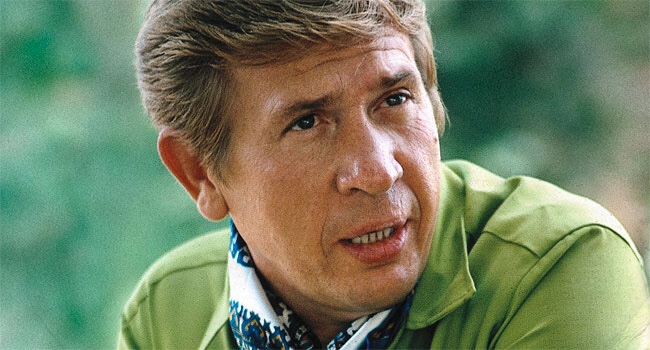
When Heartache Finds Its Voice, Even the Strongest Must Weep
When Buck Owens released “Cryin’ Time” in 1964 as the B-side to his single I’ve Got a Tiger By the Tail, few could have predicted the quiet storm it would stir in the heart of American country music. Though this version never charted as a standalone hit, its emotional resonance and aching authenticity would find greater commercial success a year later when Ray Charles‘s soulful rendition climbed to No. 6 on the Billboard Hot 100 and won two Grammy Awards. Still, it was Owens—the kingpin of Bakersfield’s twangy rebellion against Nashville polish—who birthed the song, threading its sorrowful DNA into the tapestry of honky-tonk heartache with unmistakable grace.
Originally appearing during Owens’ mid-’60s golden era, “Cryin’ Time” exemplifies the stark, resonant economy that defined his songwriting. At just over two minutes long, the song is brief but devastating—built on simple chord progressions and minimal ornamentation, letting the lyrics breathe and bleed. This was Owens’ genius: not in baroque composition or orchestral flourishes, but in wielding plain language like a scalpel to expose human vulnerability.
The lyrics are a lamentation from someone resigned to inevitable loss: “Oh, it’s cryin’ time again / You’re gonna leave me.” There’s no pleading, no dramatic protest—only an intimate acknowledgment of hurt repeated so often it has become ritual. It’s this stoicism that makes “Cryin’ Time” so quietly powerful. Owens doesn’t shout his pain; he wears it like an old coat, familiar and heavy with memory.
Musically, the song is a quintessential example of the Bakersfield Sound—sharp Telecaster licks, unvarnished vocals, and a steel guitar that moans rather than weeps. Compared to Nashville’s syrupy arrangements of the time, Owens’ sound was leaner, harder-edged—a reflection of life in California’s oil fields and honky-tonk bars rather than Music Row’s air-conditioned studios.
Owens wrote from a place of hard-earned understanding, not grand theatricality. That raw honesty is what made his work endure—not just in country circles but across genre lines. When Ray Charles heard “Cryin’ Time”, he recognized its universal pain and reimagined it through the lens of soul and R&B, yet left its essential structure intact. That speaks volumes about the song’s sturdy emotional architecture—it transcends arrangement and instrumentation because its truth is unshakable.
In “Cryin’ Time,” Buck Owens distilled heartbreak into something elemental: predictable as dusk, painful as longing left unanswered. It is not merely a breakup song—it is an ode to emotional recurrence, to wounds that never quite scar over. As long as people fall out of love with weary hearts and silent tears, this song will continue to echo—a timeless requiem for moments when goodbye feels both familiar and unbearable.